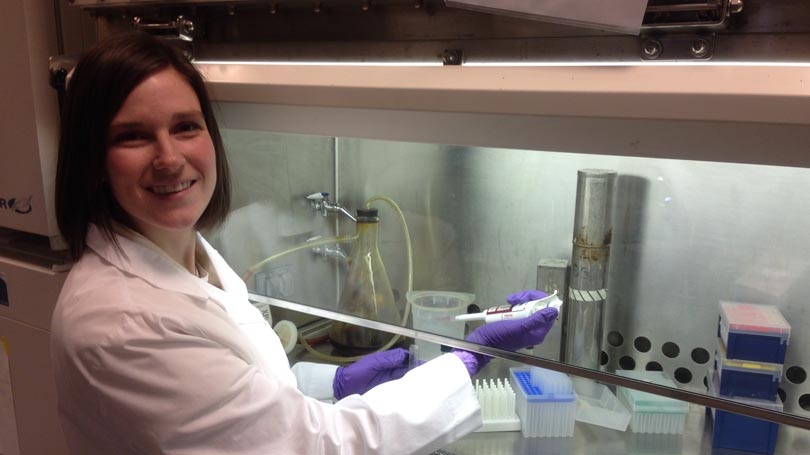In the Green Lab, Megan O’Connor studies the immune response to LP-BM5, a retrovirus which causes severe immunodeficiency in mice i.e. mouse AIDS (MAIDS). The LP-BM5 infection model is used to further understand the immune response against retroviral infection and also as a model system to study HIV infection. Mice infected with LP-BM5 have a weakened immune response and O’Connor’s project involves looking at what cell type(s) may be contributing to the immunosuppressive environment. In particular, there are two cell types which are shown to be immunosuppressive during viral infections and in cancer 1) T-regulatory cells (Tregs) and 2) myeloid derived suppressor cells (MDSCs). These cells have recently been associated with retroviral infections as well, such as HIV, but it remains unknown as to whether these cells are helping or hindering the immune response. Understanding how Tregs and MDSCs contribute to the immunodeficiency in MAIDS mice will allow better understanding of cellular targets for HIV immunotherapy.
One of O’Connor’s projects is focused on how Tregs and MDSCs may be communicating with each other during LP-BM5 infection. To answer this question she has been eliminating the Treg compartment in mice and identifying how this affects the phenotype and function of the MDSC compartment, after LP-BM5 infection. Thus far, her work has identified that in the absence of Treg cells, the MDSC cells have an altered phenotype and have a greater capacity to suppress certain immune cells. It is hypothesized that in the absence of one immunosuppressive cell type (Tregs) the other (MDSCs) is compensating by increasing it suppressive capability.
A second project involves looking at different subsets of MDSCs and how they are able to differentially suppress other immune cells. “We have demonstrated an MDSC subset which is able to suppress two major classes of immune cells (T- and B-cells), and also an MDSC subset that is only able to suppress one of these classes of immune cells (T-cells), but is unable to suppress the other (B-cells),” O’Connor writes.
“With the generous contributions from the Graduate Alumni Research Award I was able to use services from DartLab: Immunoassay and Flow Cytometry Shared Resource in order to sort cells isolated from animals to be used in both projects. This allowed us to understand the mechanism(s) by which our MDSCs and MDSC subsets were able to differentially suppress other immune cells. Furthermore, this work has contributed to a greater understanding of phenotypic and functional characteristics which may allow for future targeting of MDSCs for immunotherapeutic depletion.”
